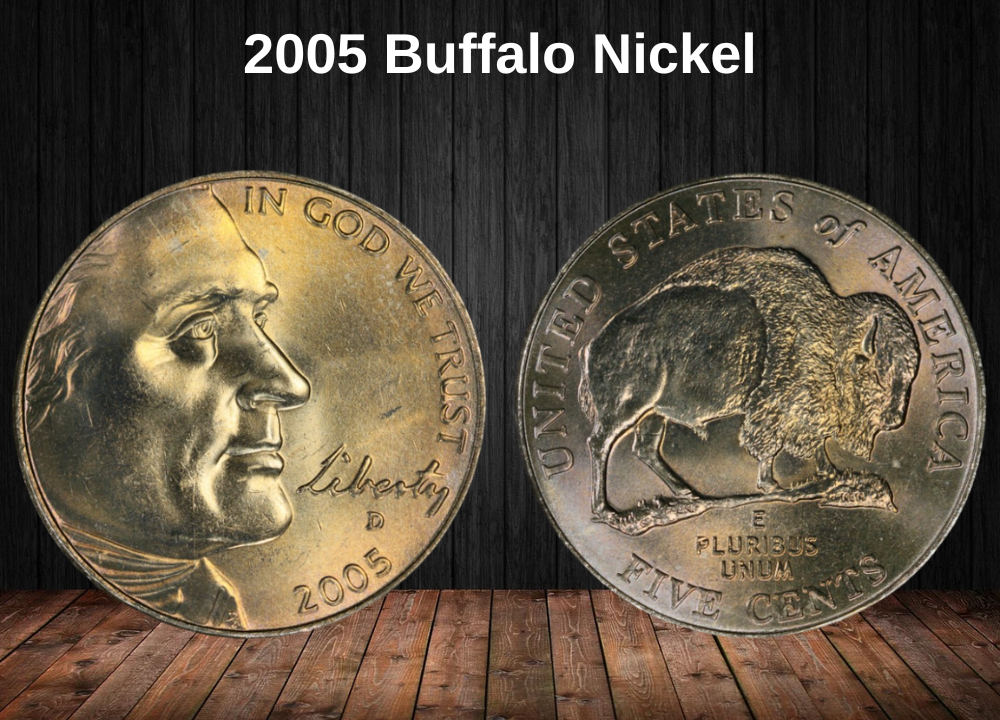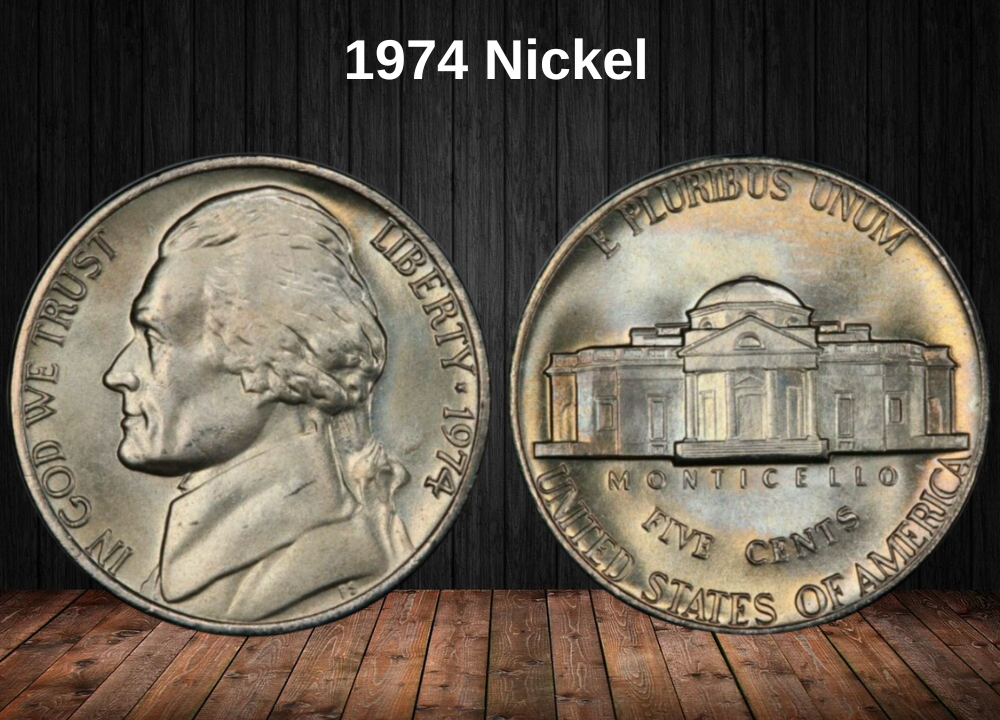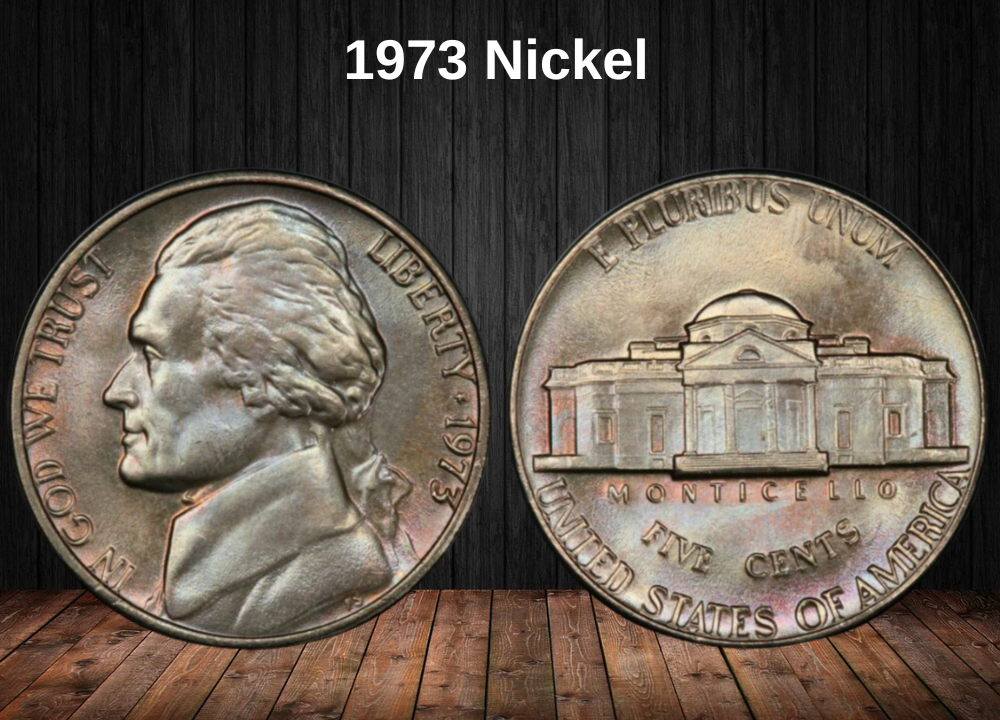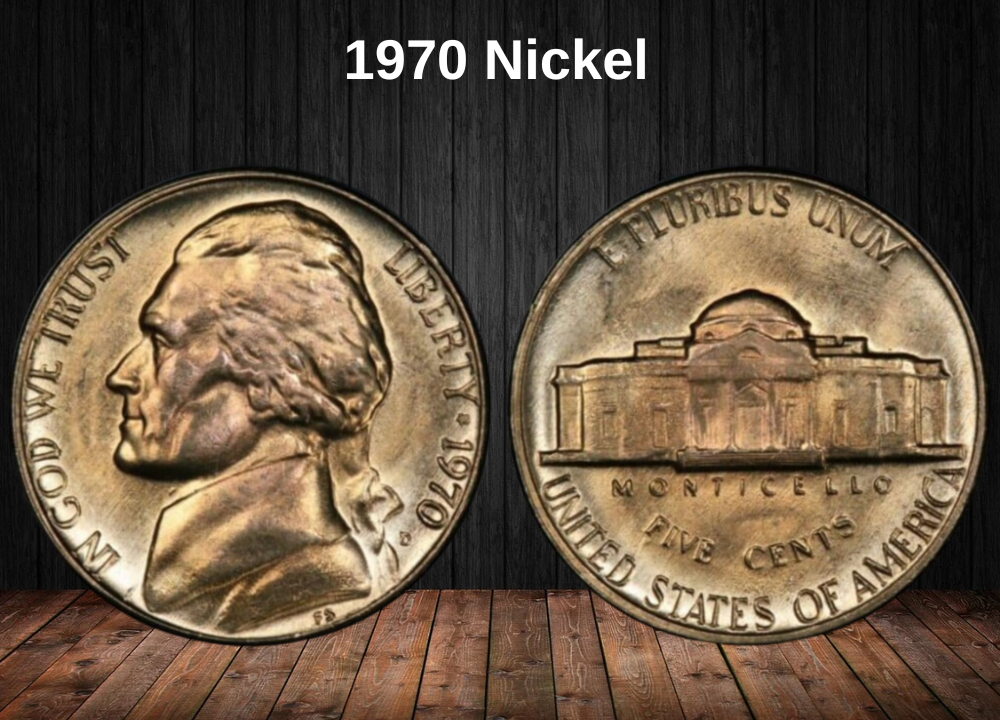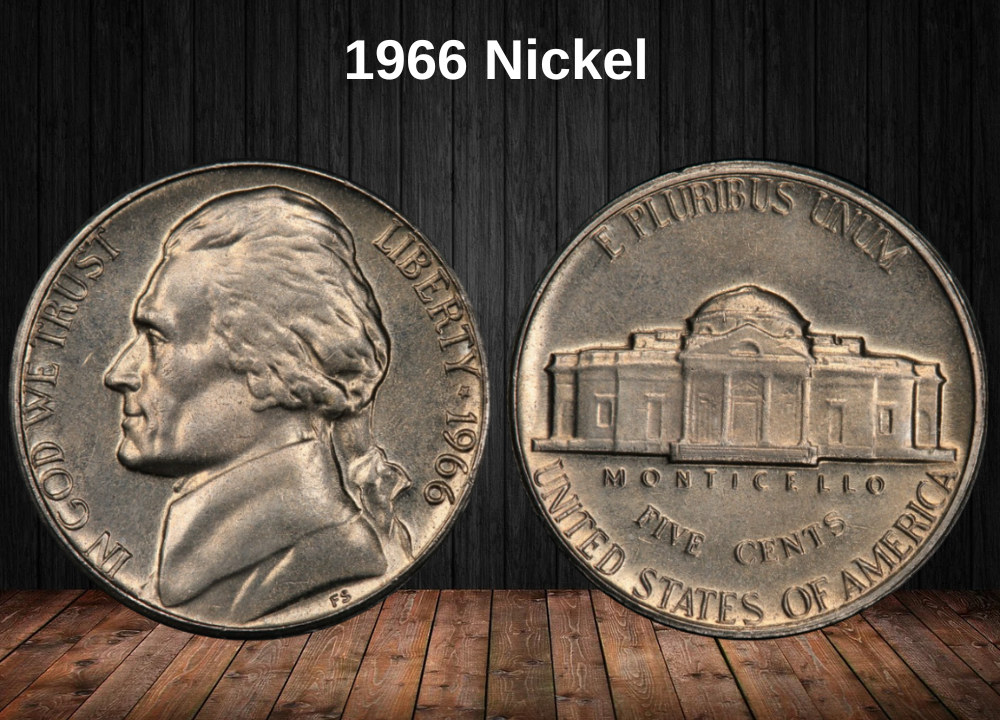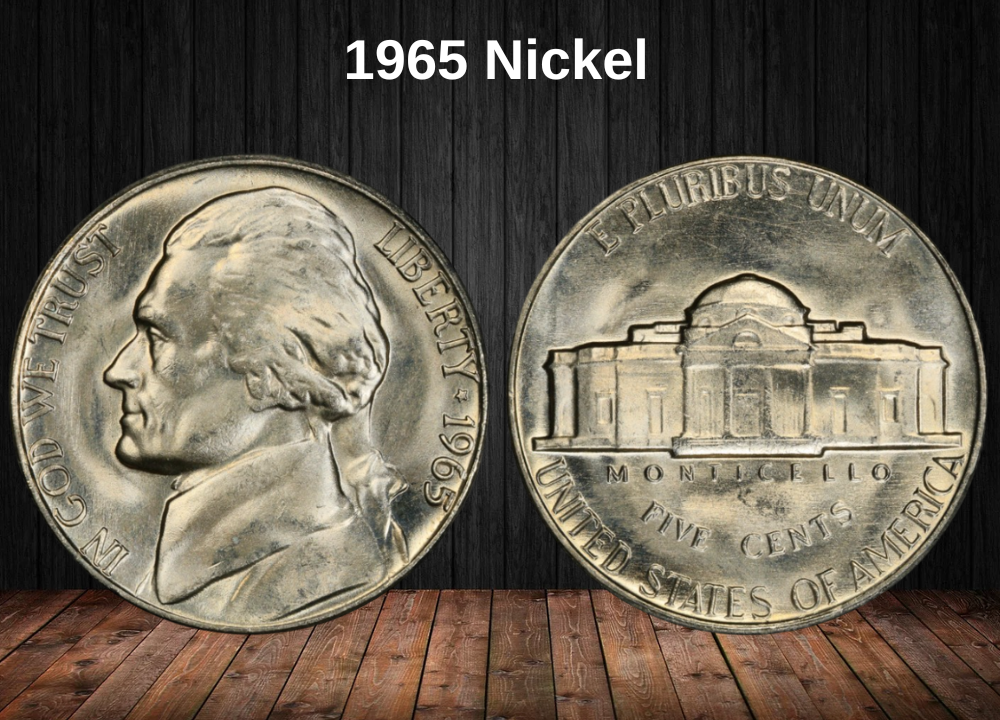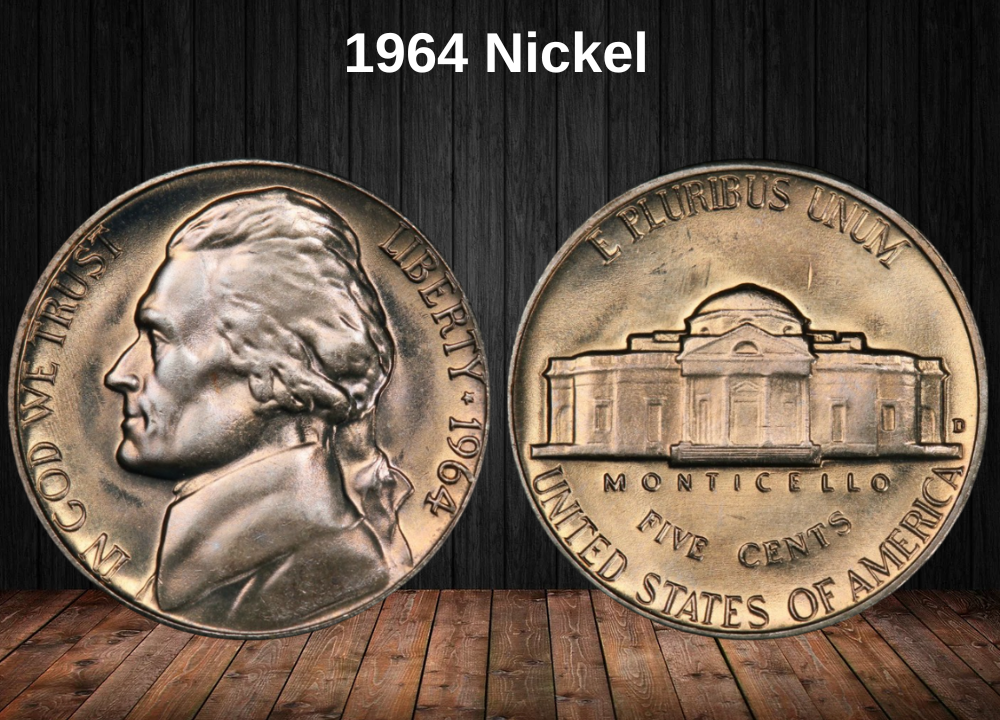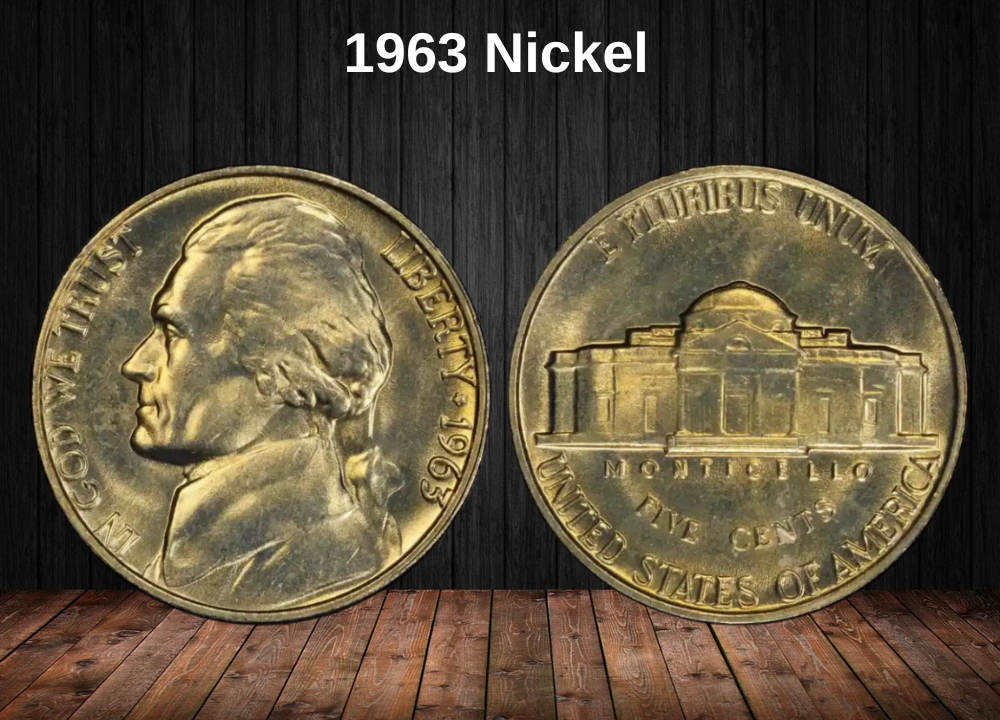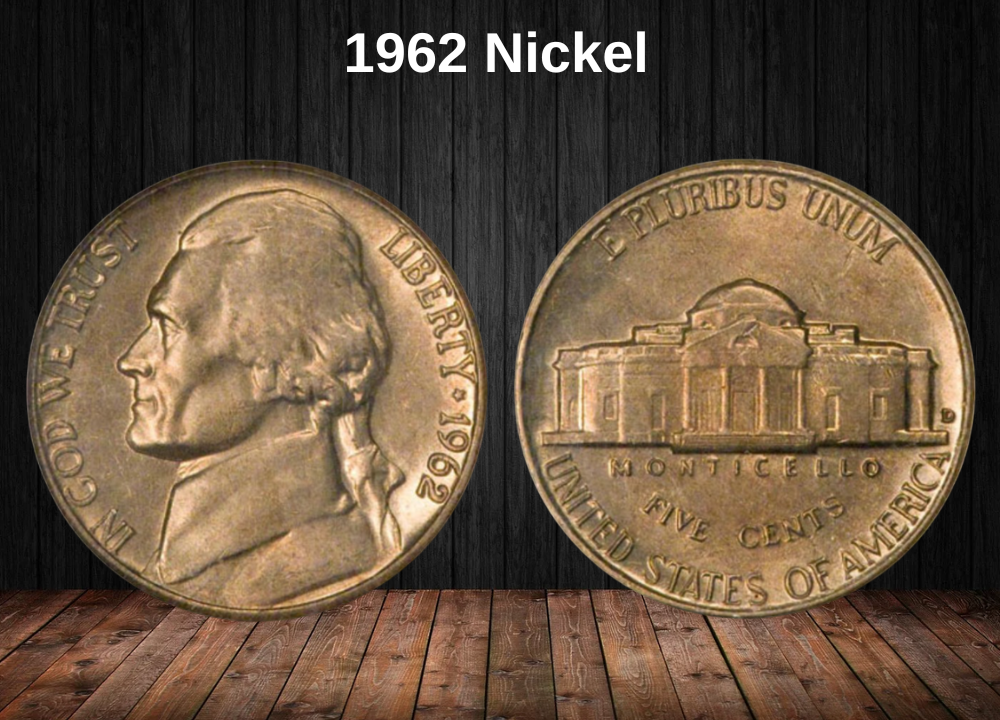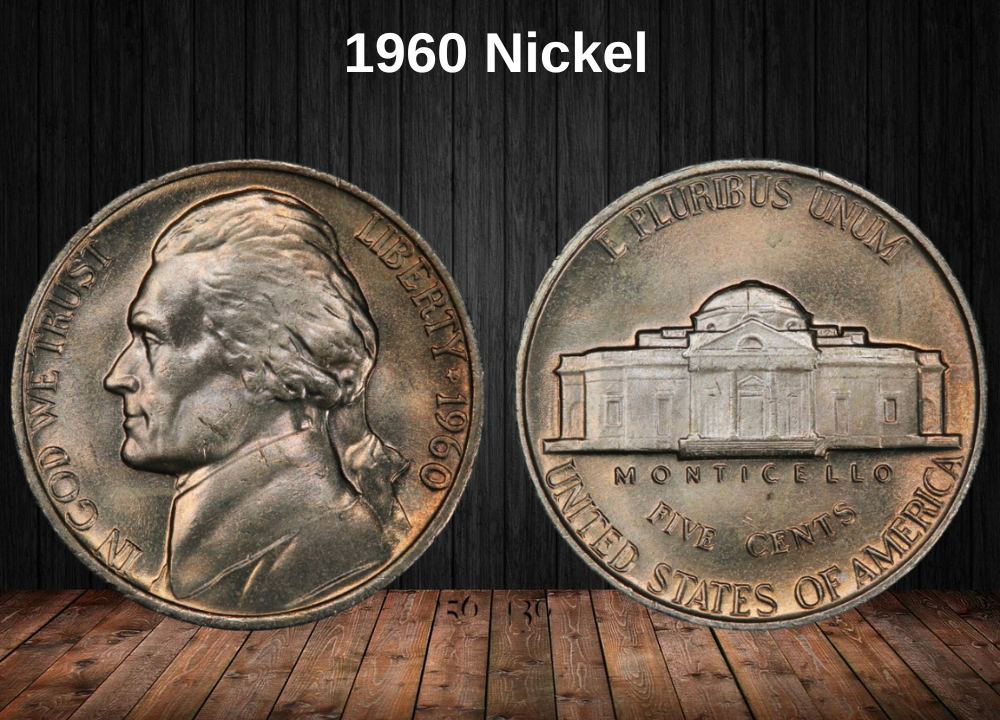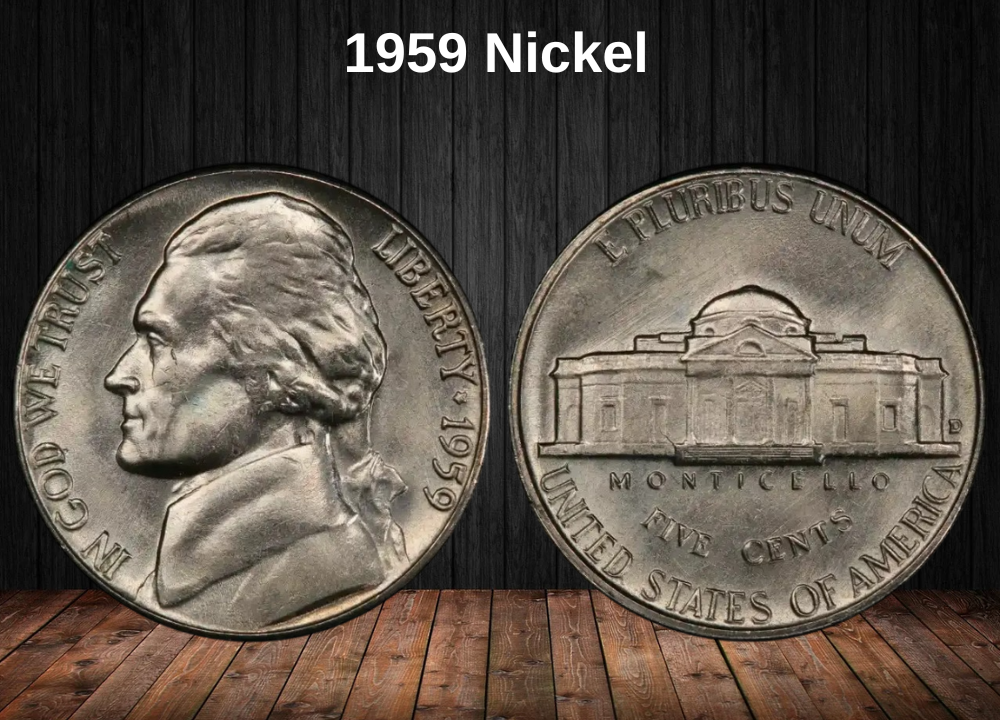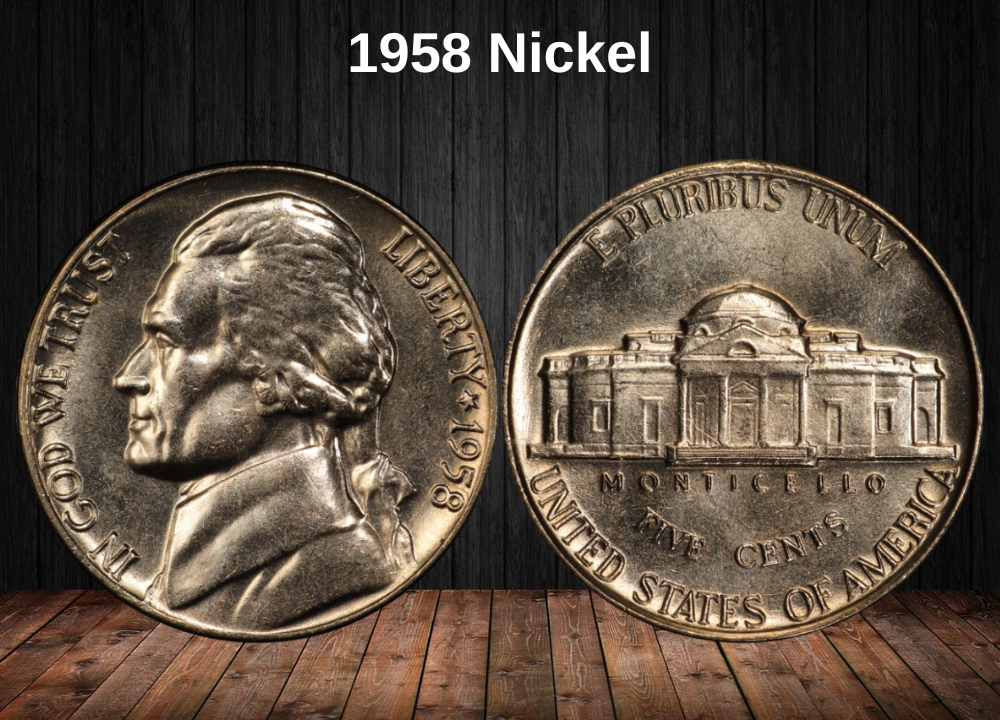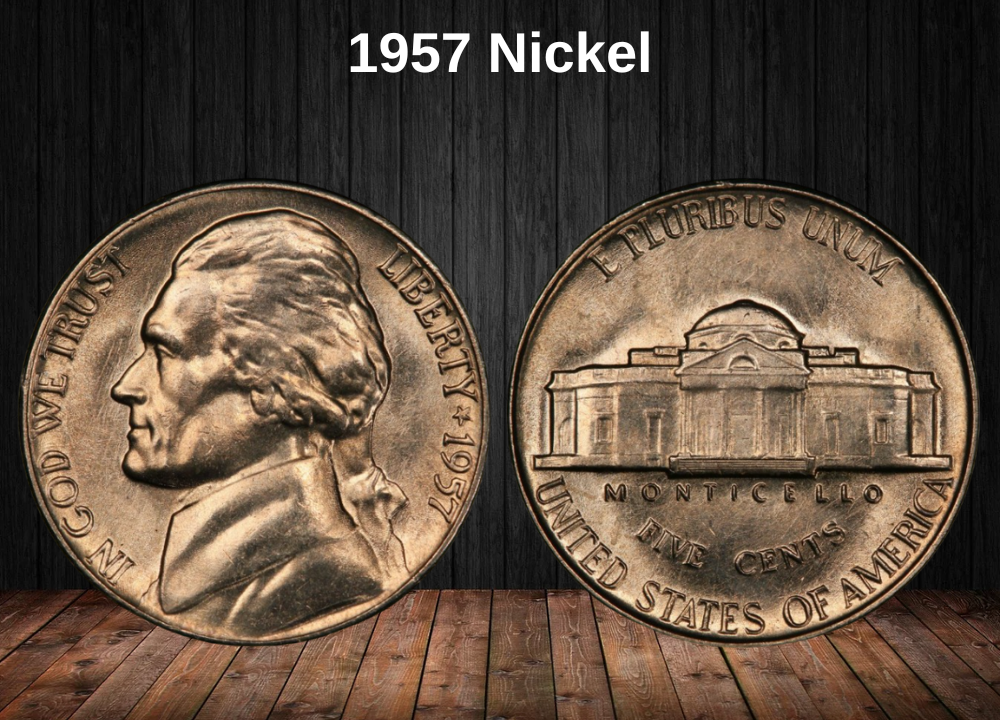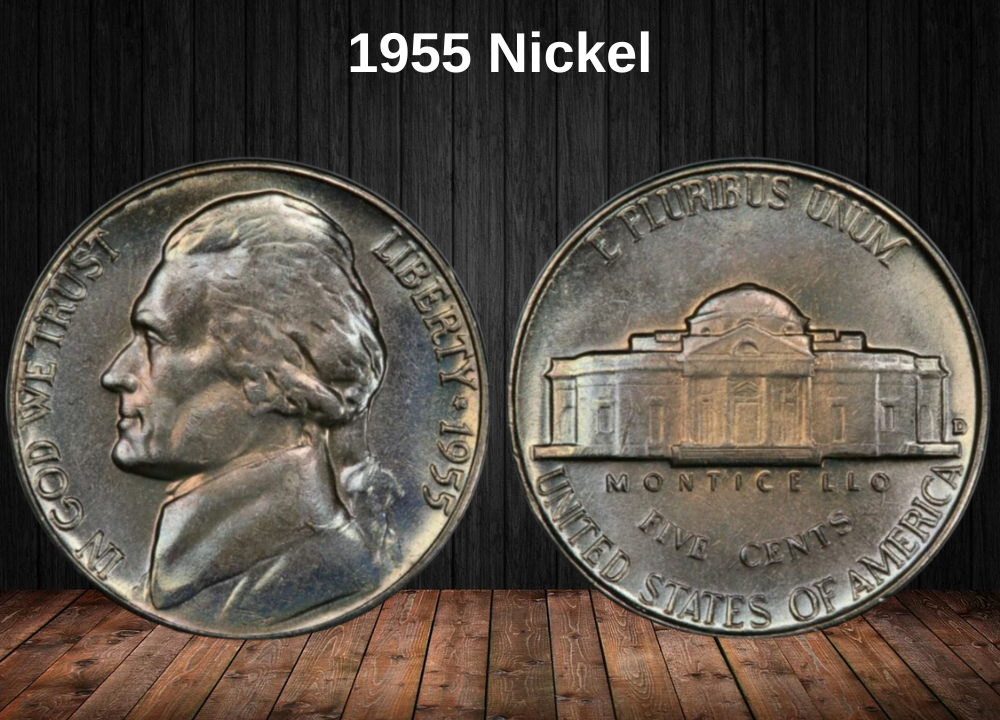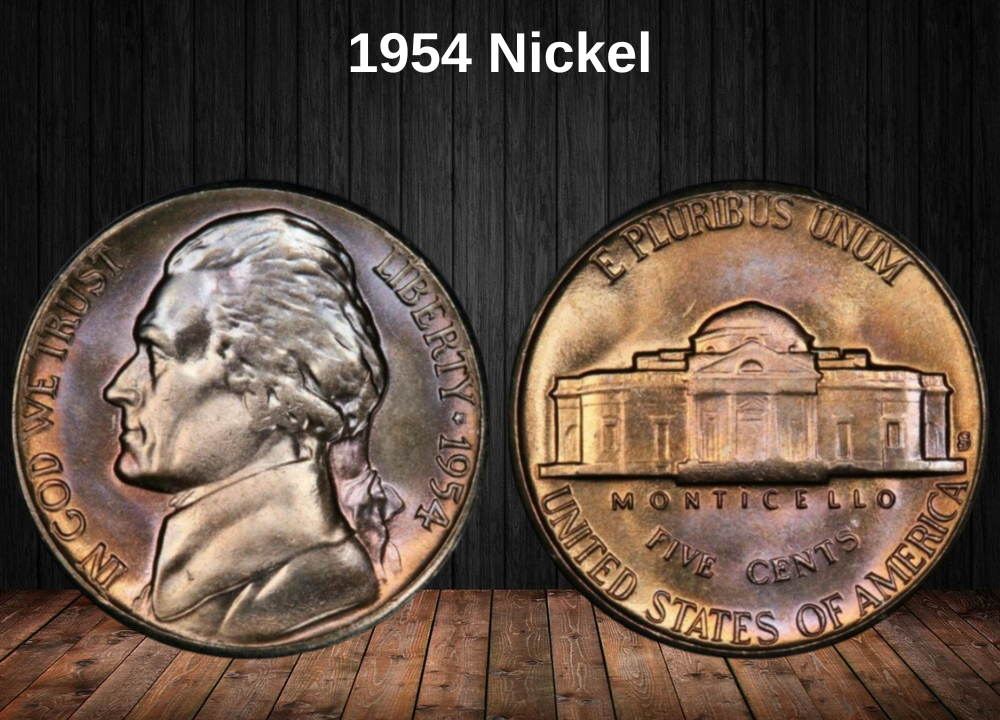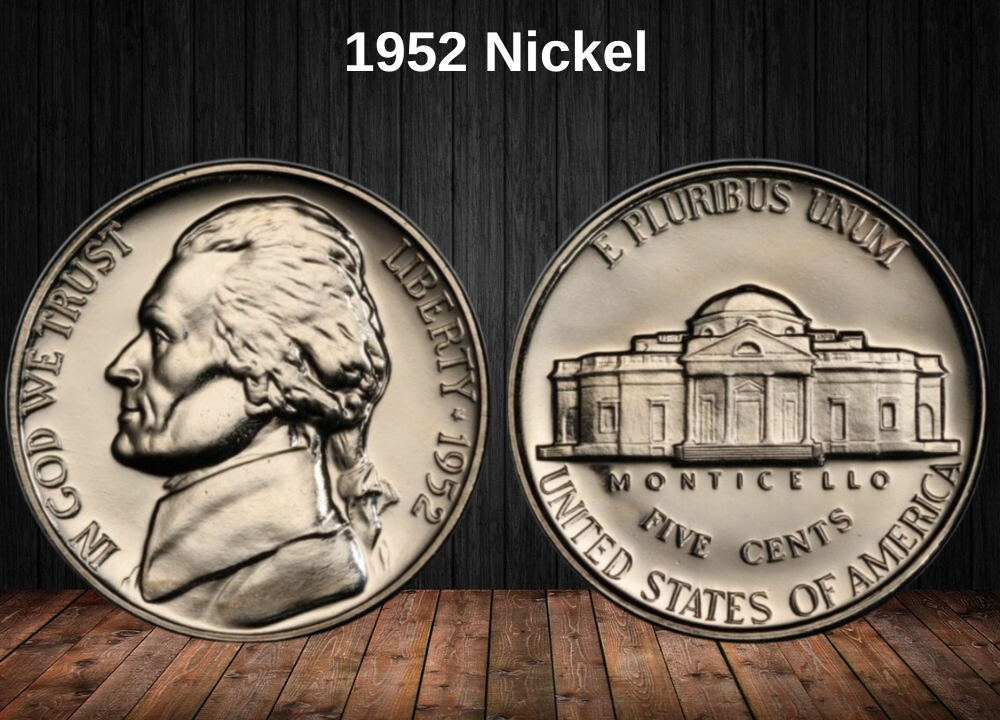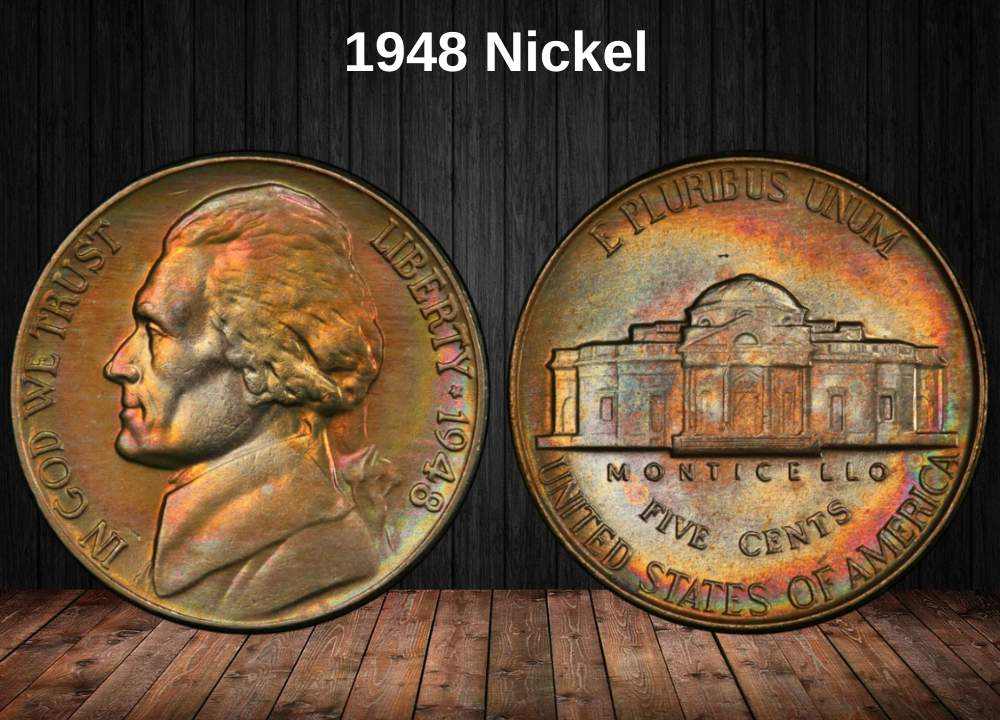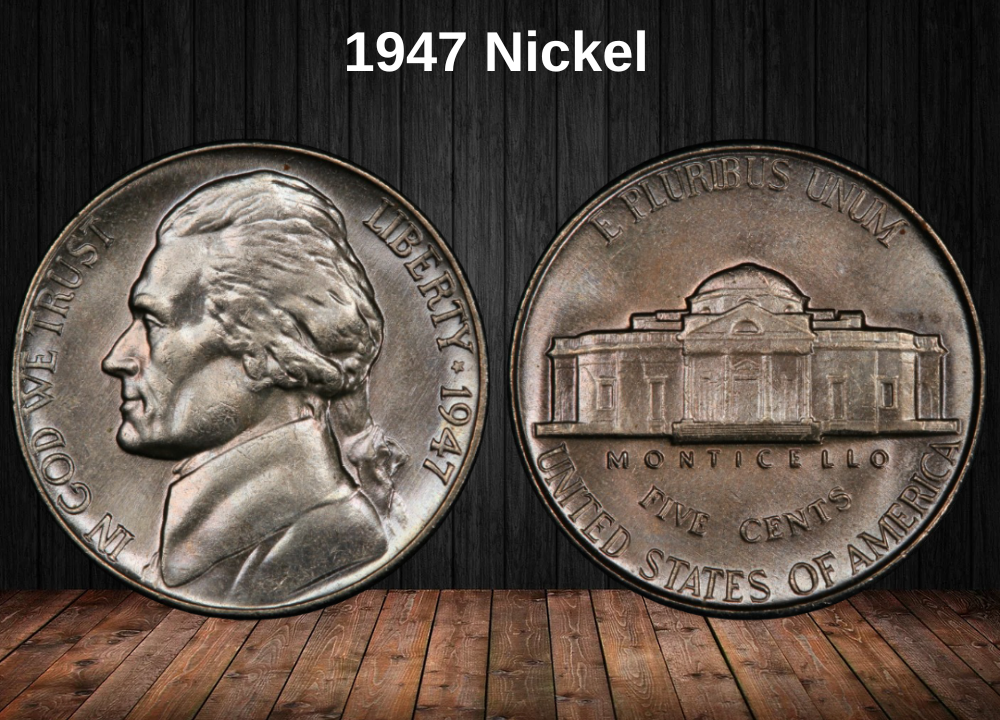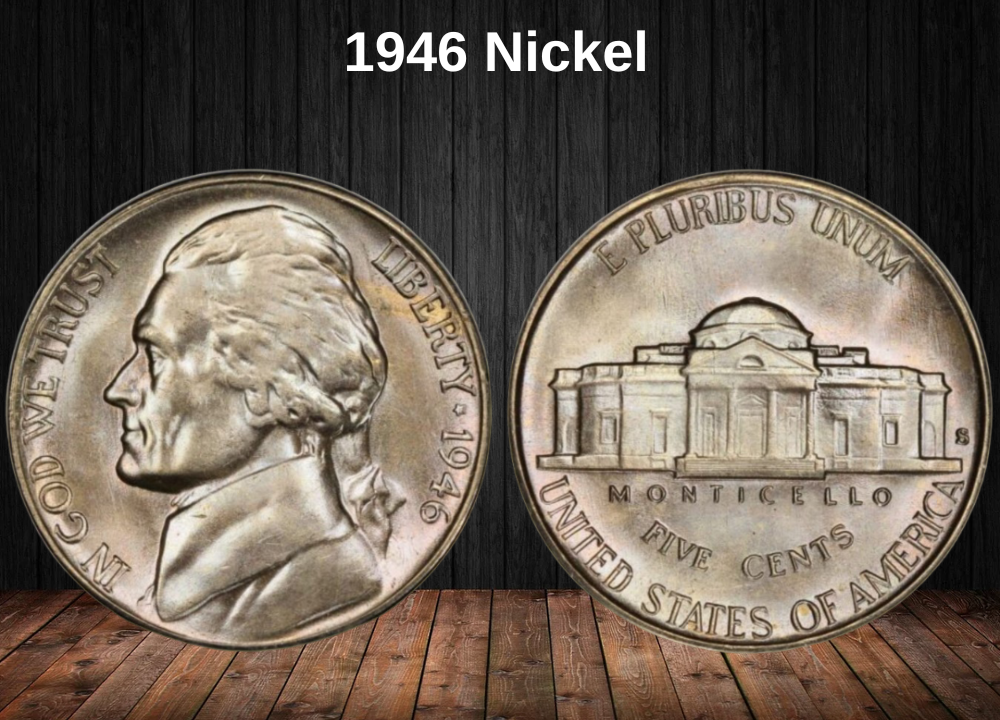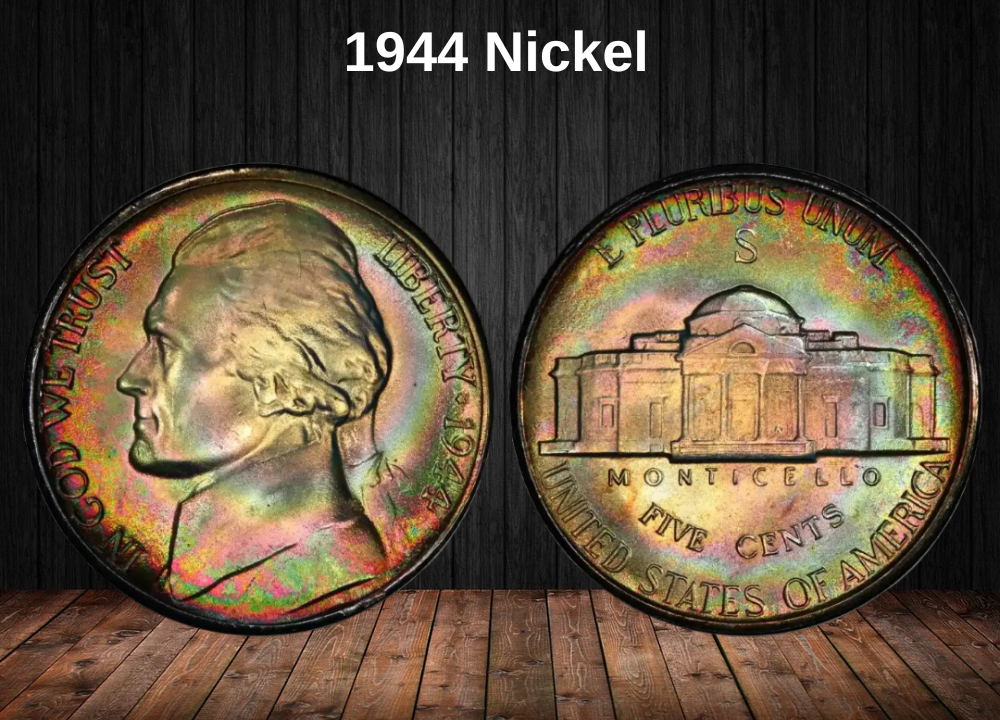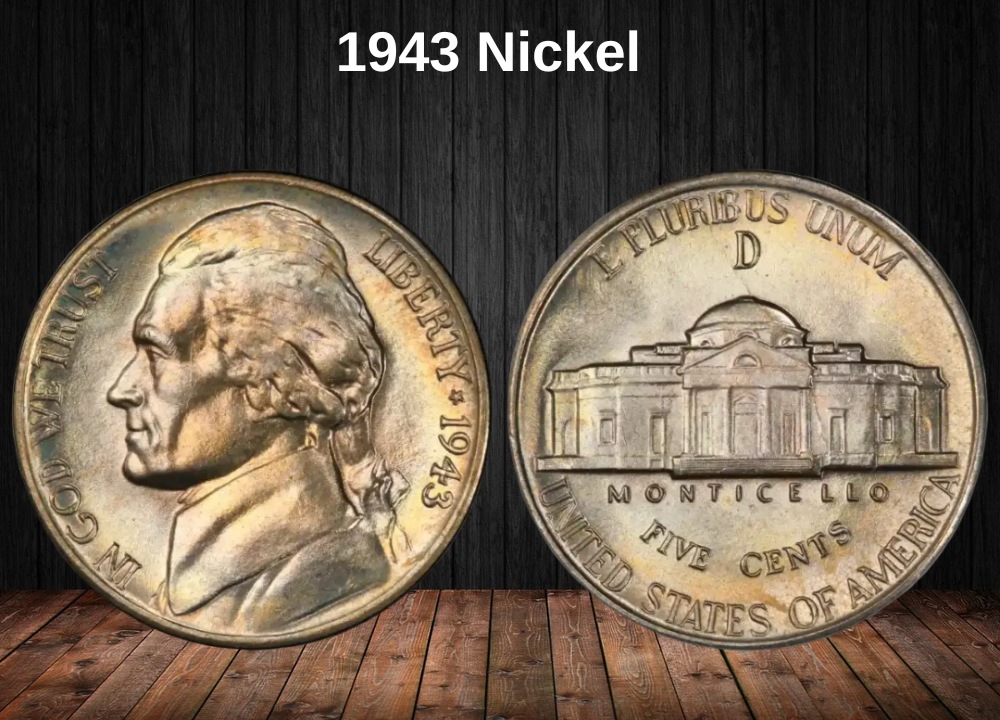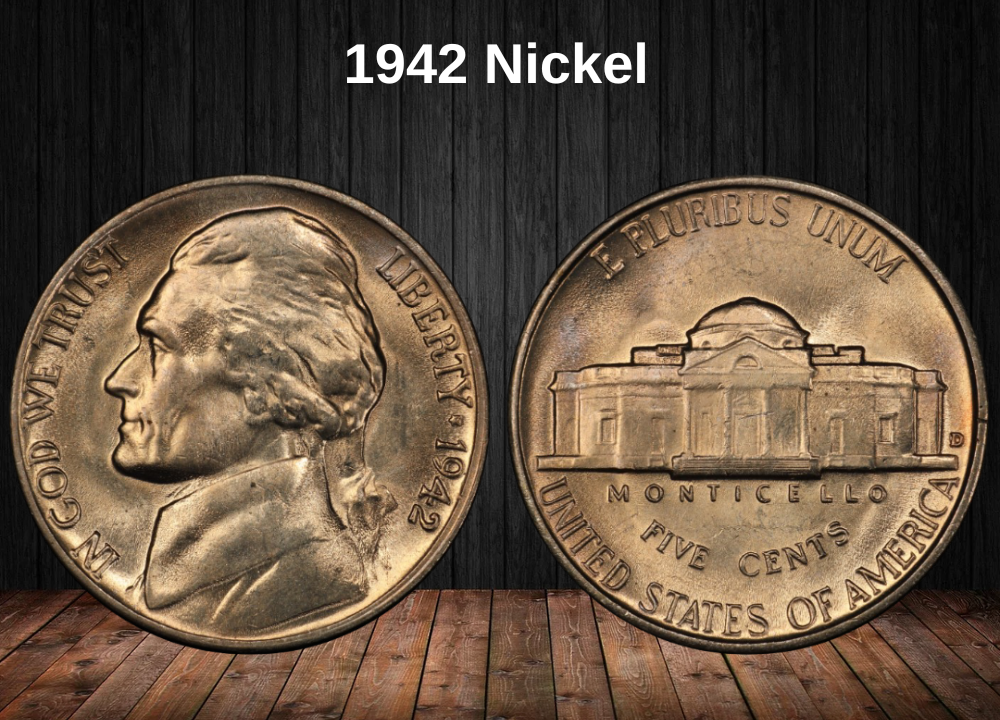Have you recently come across a 1940 Jefferson nickel and are wondering what it might be worth?
Whether you’re a seasoned collector or someone who just stumbled upon this old coin, you’re in the right place. This guide is designed to help you understand the true value of a 1940 nickel, whether you plan to buy, sell, or simply learn more about it.
In this article, you’ll discover how to identify valuable 1940 nickels, including key features that make them stand out. You’ll also learn how to grade your coin’s condition and what mint errors can make certain nickels much more valuable.
Let’s dive into what makes the 1940 Jefferson nickel special—and how much it might be worth in today’s market.
1940 Jefferson Nickel Value Chart
| Mint Mark | Good | Fine | Extremely Fine | Uncirculated |
|---|---|---|---|---|
| 1940 (No Mint Mark) | $0.12 | $0.24 | $0.60 | $1.84 |
| 1940-D | $0.12 | $0.24 | $0.84 | $3.01 |
| 1940-S | $0.12 | $0.24 | $0.84 | $2.73 |
| 1940-S (Proof) | – | – | – | $7,850 |
The History Behind the 1940 Jefferson Nickel

The Jefferson nickel made its debut in October 1938, marking the end of the long-running Buffalo nickel, which had been in circulation for 25 years. The U.S. Mint had long struggled with the Buffalo nickel’s production, and once the legal timeframe to change its design expired, they acted swiftly to create a replacement—without needing Congressional approval.
In early 1938, the Mint launched a national design competition to find the artist for the new five-cent coin. Out of numerous submissions, Felix Schlag was selected as the winner.
His design featured President Thomas Jefferson on the obverse and Jefferson’s iconic home, Monticello, on the reverse. Although his original artwork underwent several rounds of revisions, it was ultimately approved, and the Mint began striking the new nickel in Philadelphia, Denver, and San Francisco.
Interestingly, while the Jefferson nickel was released in 1938, most coins didn’t reach widespread circulation until 1940, as collectors had hoarded large quantities of the early issues from 1938 and 1939.
In 1940, a subtle but important change occurred. The U.S. Mint refined the coin’s master hub, resulting in sharper details on the Monticello’s staircase. These newly crisp details came to be known as Full Steps, a term still used today to describe well-struck Jefferson nickels. Coins that clearly show at least five or six full steps are highly sought after and command higher prices among collectors.
Features of the 1940 Nickel
The obverse of the 1940 Nickel

The front side, or obverse, of the 1940 Jefferson nickel showcases a left-facing portrait of Thomas Jefferson, one of America’s Founding Fathers and the third President of the United States.
Along the left rim, you’ll see the national motto “IN GOD WE TRUST” engraved in bold capital letters. On the right side, the word “LIBERTY” appears, followed by the coin’s date, 1940. These two inscriptions are separated by a single five-pointed star, giving the coin a balanced and timeless appearance.
Jefferson’s detailed profile and the coin’s patriotic elements make this obverse design both historically meaningful and visually striking for collectors.
The reverse of the 1940 Nickel
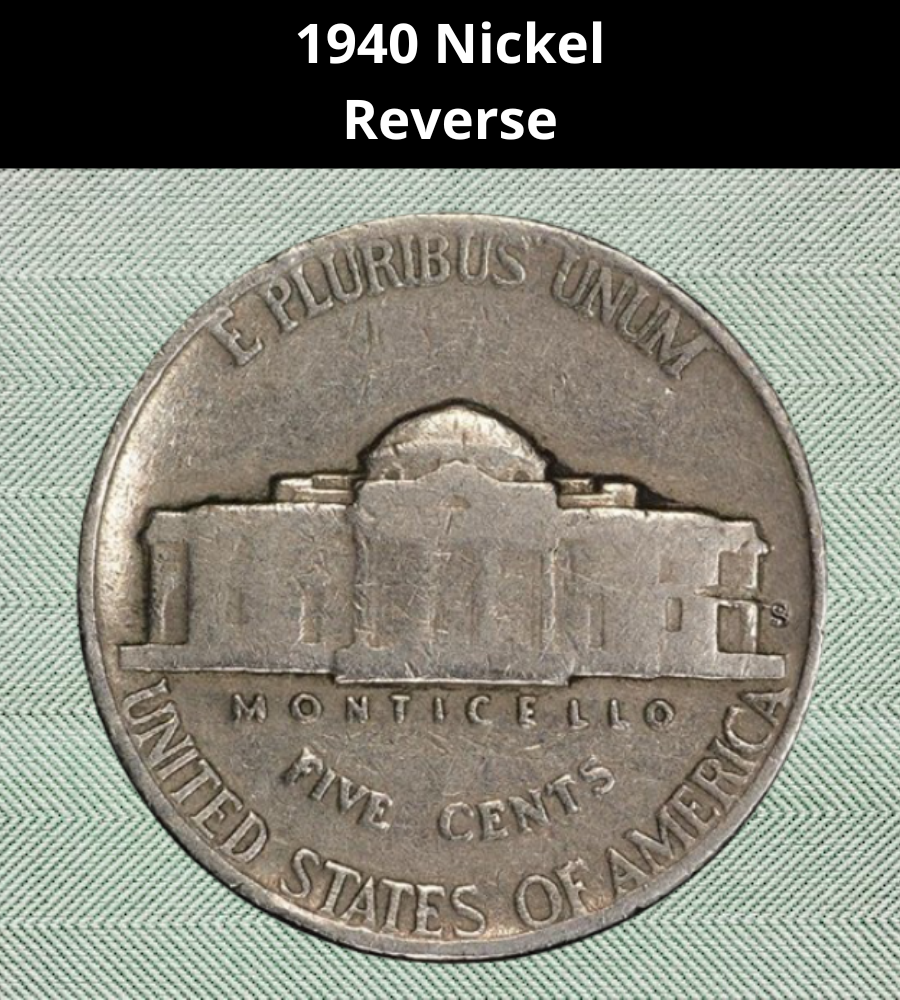
The reverse of the 1940 Jefferson nickel proudly displays an image of Monticello, Thomas Jefferson’s elegant and historic Virginia estate.
After numerous revisions, designer Felix Schlag and the U.S. Mint settled on a simple, front-facing view of the building with minimal background detail, emphasizing the symmetry and structure of Jefferson’s famous home.
Across the top rim, the Latin motto “E PLURIBUS UNUM” (“Out of many, one”) is inscribed, reflecting the unity of the nation. Along the bottom rim, you’ll see “UNITED STATES OF AMERICA” curved neatly beneath the design.
Just below the steps of Monticello is the building’s name, “MONTICELLO,” acting as a label for the iconic landmark. Beneath that, the coin’s denomination—“FIVE CENTS”—is clearly written.
If you look closely at the far right side of the building, you’ll spot the mint mark, indicating where the coin was struck: “D” for Denver, “S” for San Francisco, or no mint mark for Philadelphia.
Additional Details About the 1940 Jefferson Nickel
The 1940 Jefferson nickel is composed of 75% copper and 25% nickel, which was the standard alloy used for five-cent coins at the time. The coin was designed by Felix Schlag, who created both the obverse and reverse designs.
Each nickel weighs exactly 5 grams, has a diameter of 21.2 millimeters, and features a plain edge (meaning it has no reeding or ridges).
In 1940, the coin was struck at three U.S. Mint facilities:
- Philadelphia (no mint mark)
- Denver (mint mark “D”)
- San Francisco (mint mark “S”)
You can find the mint mark on the reverse side of the coin, located to the far right of the Monticello building, just beside the base.
How to Grade Your 1940 Jefferson Nickel
When it comes to the 1940 Jefferson nickel, collector interest is strongest in coins that are in Mint State (MS) condition. Grading your coin properly is essential to determining its true value, and it starts by identifying signs of wear and assessing overall eye appeal.
What to Look for on the Obverse
Begin with Jefferson’s hair—in uncirculated coins, this area should show frosty texture with no signs of wear. This frost is often the first detail to fade in circulated coins.
Next, examine the space above Jefferson’s eye. This spot is another high point that tends to wear early. In a Mint State coin, this area should show no visible flattening or dullness.
Also, inspect the collar and shoulders of Jefferson’s portrait. Loss of lustre in these zones is a telltale sign that the coin has been in circulation.
What to Check on the Reverse
Flip the coin over and examine the Monticello building. Key areas include:
- The triangular pediment above the front door
- The vertical columns
- The base/foundation
These spots are among the first to show rubbing or flattening. A true Mint State example will retain full lustre across these high points.
Grading Scale for the 1940 Nickel
| Grade Number | Grade Description |
|---|---|
| 1 | Basal State |
| 2 | Fair |
| 3 | Very Fair |
| 4–6 | Good |
| 7–10 | Very Good |
| 12–15 | Fine |
| 20–30 | Very Fine |
| 40 | Extremely Fine |
| 50 | About Uncirculated (AU) |
| 60 | Mint State (MS 60) |
| 65 | Mint State (MS 65) |
| 70 | Perfect Mint State (MS 70) |
1940 Jefferson Nickel Value Guide
In 1940, the U.S. Mint produced an impressive 260 million Jefferson nickels, making this year one of the most common for the series. As a result, most 1940 nickels are easy to find, even in uncirculated (Mint State) condition.
However, locating a coin in gem-quality condition—those with sharp detail, full luster, and little to no marks—can be challenging. These high-grade examples are much rarer and often command higher prices in the collector market.
There are four main varieties of the 1940 nickel, each with its own value range depending on condition:
- 1940 (No Mint Mark) Nickel – struck in Philadelphia
- 1940-D Nickel – minted in Denver
- 1940-S Nickel – produced in San Francisco
- 1940-S Proof Nickel – special collector’s issue from San Francisco
Let’s break down the value of each type based on grade and scarcity.
1940 No Mint Mark Nickel Value
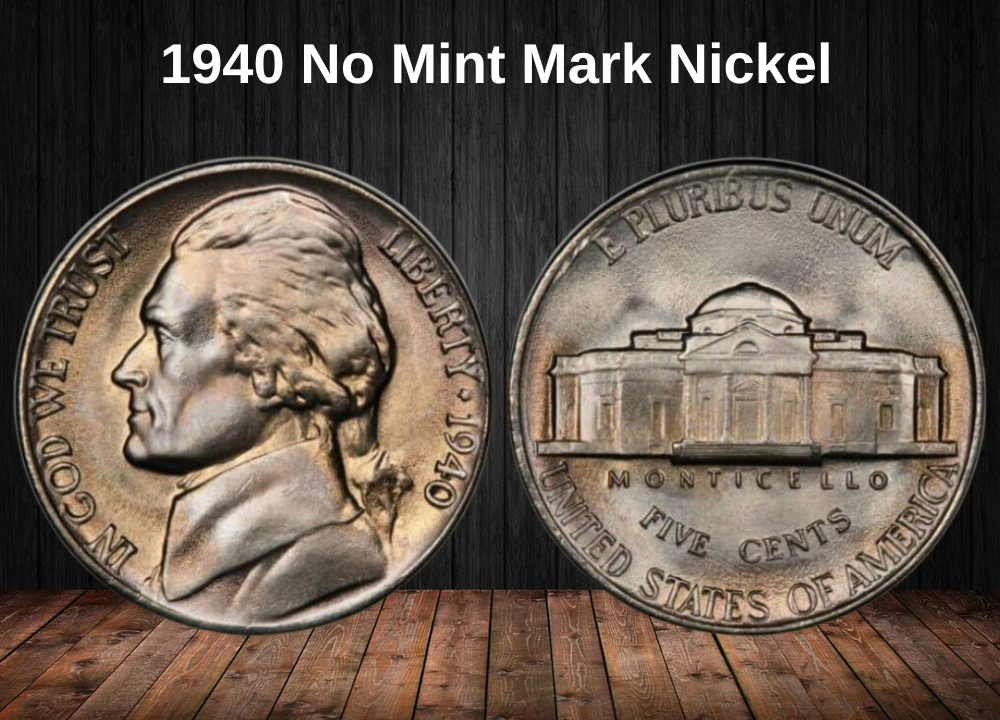
The Philadelphia Mint struck approximately 176,485,000 nickels in 1940, the highest mintage of all the facilities that year. Because of this, the 1940 no mint mark Jefferson nickel is very common, especially in circulated grades.
Even in Mint State, these coins are not hard to find. In fact, many examples with Full Steps—indicating a strong strike with visible steps on Monticello—are also relatively accessible to collectors.
Thanks to improvements made in 1939, the Mint’s striking hubs were more refined, resulting in sharper details, cleaner lettering, and an overall better-quality coin in 1940.
Value Breakdown
- In circulated condition, these nickels are generally worth between $0.10 and $0.90.
- Lower-tier uncirculated coins like MS61 fetch around $2, while a coin graded MS63 might sell for about $8.
- High-grade examples, especially those in MS67, can be worth up to $100.
- According to PCGS, a rare MS68 example sold for $558 at auction in 2021.
- Coins with the Full Steps designation bring a significant premium. A 1940 FS nickel graded MS67+ has sold for as much as $725.
These values reflect the importance of both condition and strike quality, making Full Step examples especially desirable among collectors.
1940 D Nickel Value
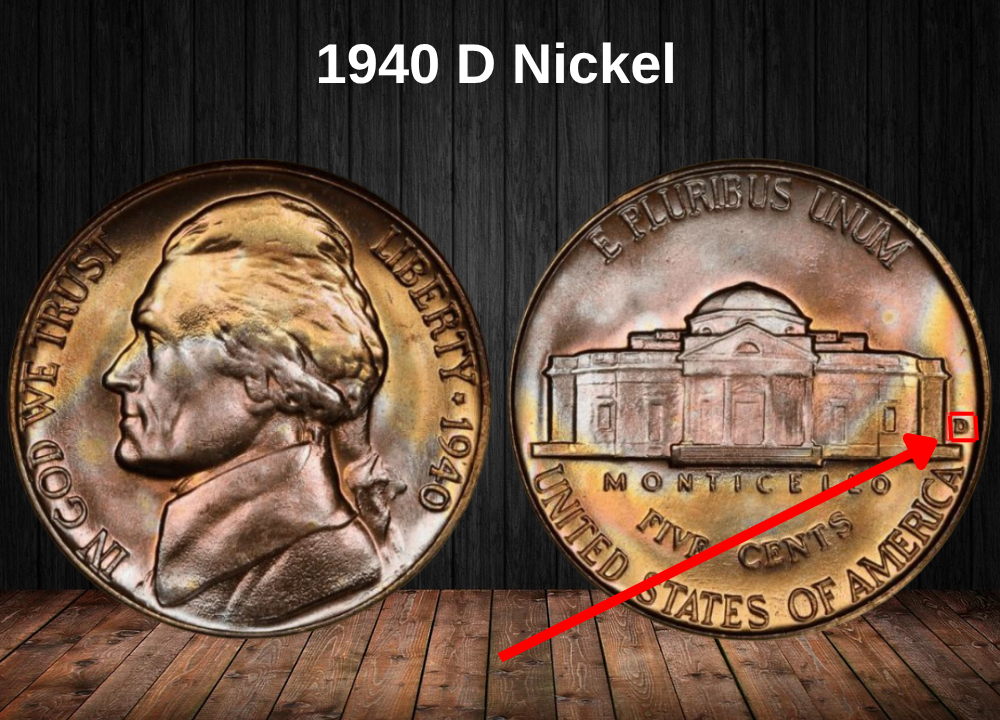
In 1940, the Denver Mint produced approximately 43,540,000 nickels, making it the second-largest mintage of Jefferson nickels that year.
Thanks to high-quality production standards, most of these coins featured a strong strike and attractive luster. As a result, many examples in gem condition—including those with the coveted Full Steps designation—are still available and relatively easy to find today.
However, because of the coin’s high mintage, circulated 1940-D nickels remain very common, and most show noticeable signs of wear.
Value Overview
- Circulated coins typically range in value from $0.10 to $2, depending on condition.
- Lower-grade mint state coins aren’t especially valuable; for instance, an MS62 example sells for around $5, while one graded MS65 may be worth about $14.
- A coin in MS67 condition can command a price of around $125.
- In 2018, a 1940-D nickel graded MS67 sold on eBay for a remarkable $795.
- A Full Steps example graded MS67 FS is even more desirable, typically valued at around $250 or more.
As with most Jefferson nickels, condition and strike quality are the biggest factors in determining value—especially for collectors seeking high-end Full Step coins.
1940 S Nickel Value
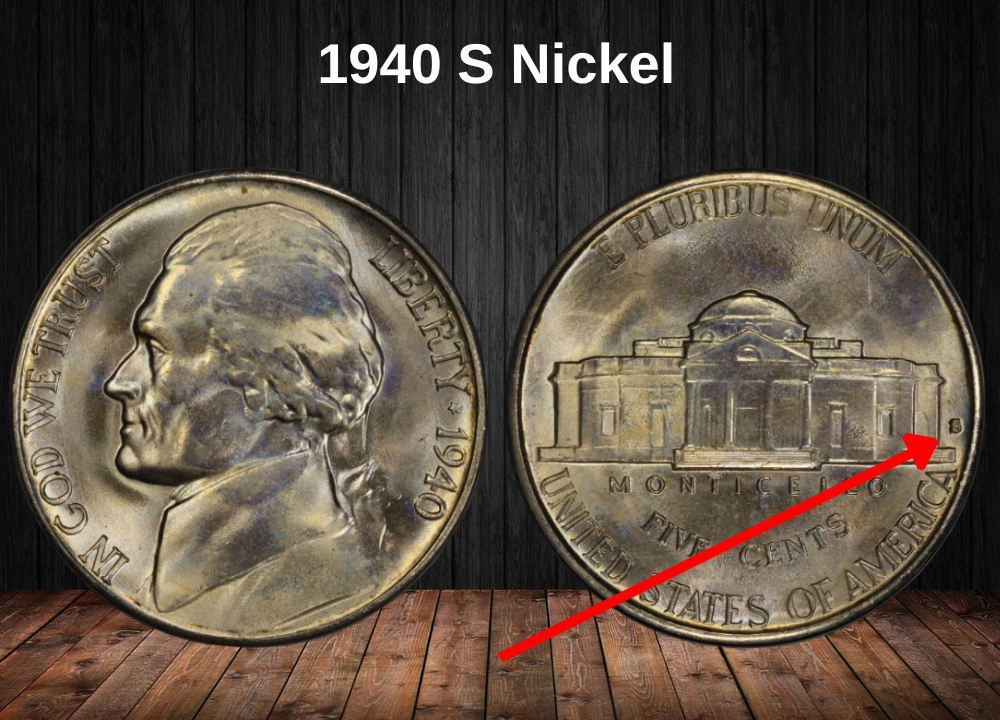
The San Francisco Mint produced the smallest batch of Jefferson nickels in 1940, with around 36,690,000 coins struck. While this is still a substantial number, it’s less than the Philadelphia and Denver outputs.
Unlike the well-struck Denver coins, the 1940-S nickels often show poorer quality. Many were struck using worn dies, resulting in a weak strike with less defined details, low luster, and visible die-clash marks—raised lines caused when the coin dies hit each other during production. Some of these coins also display signs of artificial polishing, an attempt to remove die clash marks that unfortunately diminishes their value.
Despite this, a large number of uncirculated 1940-S nickels were saved, making mint state examples relatively easy to find. However, truly gem-quality specimens remain rare due to the overall weak strike quality.
Value Overview
- In circulated condition, a 1940-S nickel is generally worth between $0.10 and $1.80.
- Mint State coins fetch higher prices: an MS63 typically sells for about $8, while an MS67 can command up to $250.
- Remarkably, a Very Good (VG) grade 1940-S nickel once sold for an astonishing $1,840 at a Heritage Auction, showcasing the value of rare, well-preserved examples.
- Full Step 1940-S nickels are especially prized by collectors, with an MS67 Full Step specimen valued as high as $775.
If you own a 1940-S Jefferson nickel with strong detail and Full Steps, it could be considerably more valuable than average.
1940 S Nickel (Proof) Value
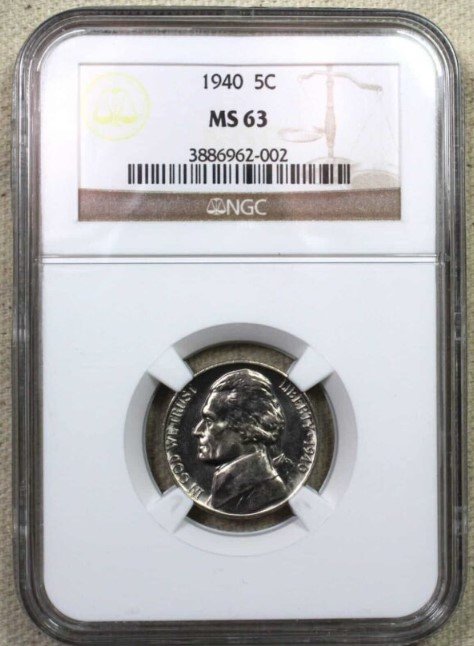
Alongside the regular circulation strikes, the San Francisco Mint also produced a limited number of proof Jefferson nickels in 1940, specifically crafted for collectors. Only about 14,158 proof coins were struck that year, making them relatively rare.
Proof nickels are known for their satin-like finish, brilliant luster, sharp contrast, and exceptionally detailed designs—qualities that give them outstanding visual appeal.
While lower-grade proofs can be purchased at reasonable prices, their value increases dramatically with grade. For instance:
- A PF60 proof coin typically sells for around $27.
- A PF65 can command about $100.
- High-grade specimens like PF68 have been known to fetch prices as high as $7,850.
Notably, in 2005, an exceptional PF68 proof Jefferson nickel from 1940 sold at auction for a staggering $18,400—the highest recorded price for a proof nickel of that year.
Rare 1940 Nickel Error List
1940-S Repunched Mint Mark (RMM) Nickel Error
A repunched mint mark error happens when the mint mark punch is applied more than once, causing two or even three overlapping impressions of the mint mark on the coin.
Several examples of this error have been found among the 1940 nickels minted at the San Francisco Mint. These repunched mint marks are prized by collectors who specialize in error coins.
Value Range
- Coins graded XF45 (Extra Fine) can be valued around $45.
- Higher-grade examples, such as those in MS68 (Mint State) condition, can fetch up to $800.
- For reference, an MS66 repunched mint mark nickel sold at auction for approximately $450 in 2017.
This error adds a unique collectible appeal and can significantly increase the coin’s market value depending on its condition.
1940 Full Steps Nickel Error
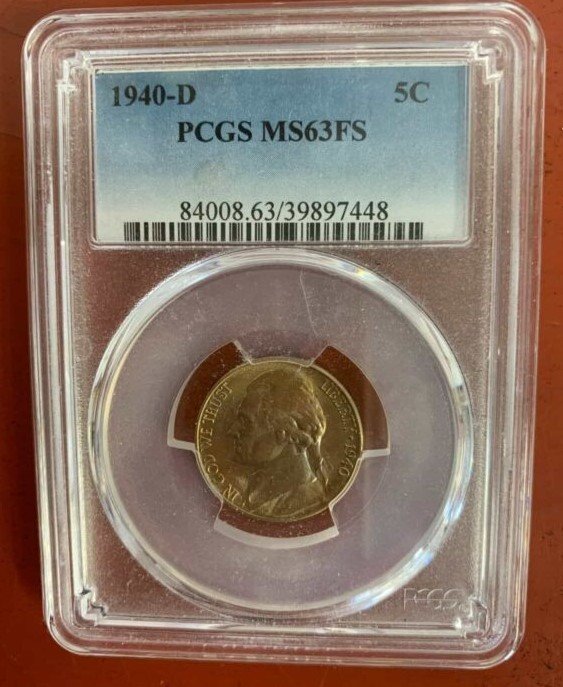
Not every 1940 Jefferson nickel displays the coveted Full Steps on the Monticello building. Coins that clearly show five or six full, sharply defined steps are considered special and highly sought-after among collectors.
These Full Steps nickels are viewed as a type of minting error or variety, and they are among the most valuable coins in the Jefferson nickel series. For instance, at a 2018 auction, a 1940-D Full Steps nickel sold for an astonishing $21,738.
If you happen to find a 1940 nickel with full steps, it’s strongly recommended to have the coin professionally certified and graded. Such a coin could be extremely valuable and potentially worth a small fortune!
1940 Off-Center Strike Jefferson Nickel Error
An off-center strike error occurs when the coin blank, or planchet, is misaligned during the minting process. This causes the design to be partially struck, leaving a portion of the coin’s surface blank or missing the intended imagery.
The value of an off-center strike nickel depends largely on how far off-center the strike is. The greater the misalignment, the more collectible—and valuable—the coin becomes.
For example:
- A 1940 nickel with a 10% off-center strike might be worth around $20.
- A more dramatic 50% off-center strike could command a price as high as $120.
Collectors prize these errors for their uniqueness, and coins with significant off-center strikes tend to attract premium prices.
1940 Reverse 1938 Nickel Error
One of the rarest and most fascinating errors among 1940-S proof nickels is the Reverse 1938 error. This occurred when mint workers accidentally used a 1938 reverse die instead of the proper 1940 die during production.
The difference is most noticeable in the Monticello steps: the 1938 die produced dull, less defined steps, while the correct 1940 die features sharp, crisp steps. As a result, the coin’s obverse maintains the typical proof-like finish with brilliant details, but the reverse appears dull, almost like a regular circulated coin.
This rare error is extremely scarce, especially in high mint state grades. Coins graded MS68 or higher have sold for as much as $25,000, making this one of the most valuable Jefferson nickel varieties.
Where to sell your nickel?
Now that you’re aware of your nickel’s value, you may be curious about the best places to sell it. Don’t worry: here’s a rundown of some top online marketplaces where you can conveniently sell your nickels, along with their benefits and drawbacks.
Explore the best platforms for selling nickels online (advantages and disadvantages).
1940 Nickel: 7 Essential FAQs
1. What are the main mint marks for the 1940 Buffalo Nickel, and how do they affect its value?
The 1940 Buffalo Nickel was minted at three locations: Philadelphia (no mint mark), Denver (D), and San Francisco (S). Philadelphia coins typically have no mint mark. The mint mark significantly influences value, with San Francisco (S) mint nickels often being rarer in higher grades, thus more valuable. Denver (D) coins fall in between, and Philadelphia (no mark) is generally the most common.
2. What are the key varieties or errors to look for in the 1940 Nickel?
One notable variety is the “1940 Reverse 1938 Error,” where some 1940 S proof nickels were struck using a 1938 reverse die. This causes distinct differences in the Monticello steps and other design elements on the reverse side. Error coins like this are highly sought after by specialists and can carry a premium depending on condition and rarity.
3. How does the condition or grade affect the value of a 1940 Nickel?
Condition dramatically impacts value. Lower grades (Good to Very Fine) are relatively common and affordable. However, high-grade examples (MS60 and above) can command significant premiums, especially for San Francisco mint coins. Collectors often seek coins with sharp details and minimal wear, and grading services like PCGS or NGC provide authentication and certification, adding to value.
4. Are there any known doubled die varieties for the 1940 Nickel?
No widely recognized doubled die varieties exist for the 1940 Buffalo Nickel in the main series, unlike other years where doubled die obverses or reverses have been documented. Collectors should always carefully inspect coins under magnification for possible minor die anomalies, but none are officially cataloged as major doubled die errors for 1940.
5. What is the historical significance of the 1940 Buffalo Nickel in the series?
The 1940 Buffalo Nickel was minted near the end of the series, which ran from 1913 to 1938 officially, but with additional proof and special strikes until 1942. The 1940 issues reflect the transition period just before the Jefferson Nickel replaced the Buffalo design. Collectors prize these late dates for their connection to the end of the classic Buffalo design era.
6. How rare are Proof 1940 nickels, and how do they differ from circulation strikes?
Proof 1940 nickels, especially from the San Francisco mint (S), are rarer than circulation strikes. Proof coins were specially struck with polished dies on polished planchets for collectors, resulting in a mirror-like finish. Their limited mintage and superior detail make them much more valuable, often commanding a premium many times higher than regular circulation examples.
7. What tips should collectors keep in mind when authenticating a 1940 Nickel?
Collectors should verify mint marks carefully, as some counterfeit or altered coins exist. Checking for wear consistent with grade and looking for damage or cleaning signs is essential. Using a reputable grading service can confirm authenticity. Additionally, examining the coin under magnification for die markers or known errors can help confirm whether it’s a genuine 1940 Buffalo Nickel or a special variety.

